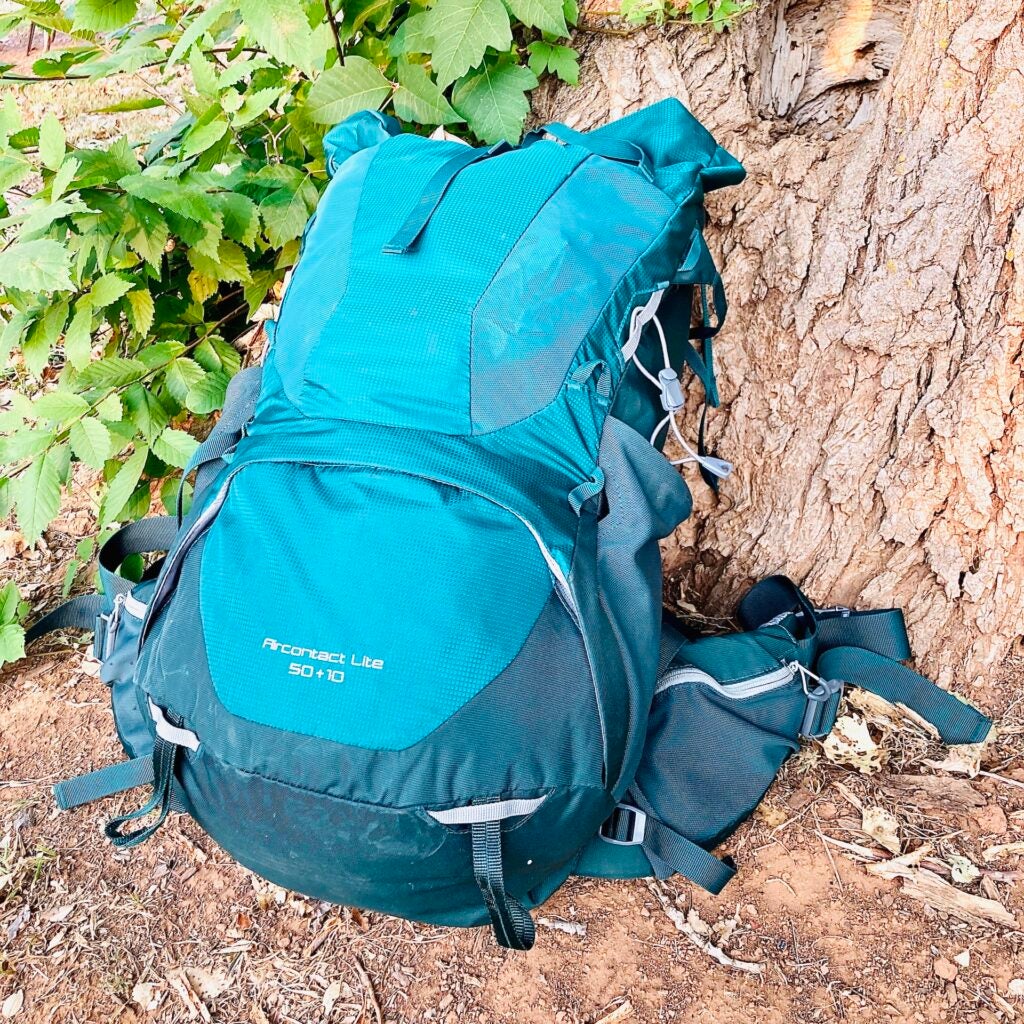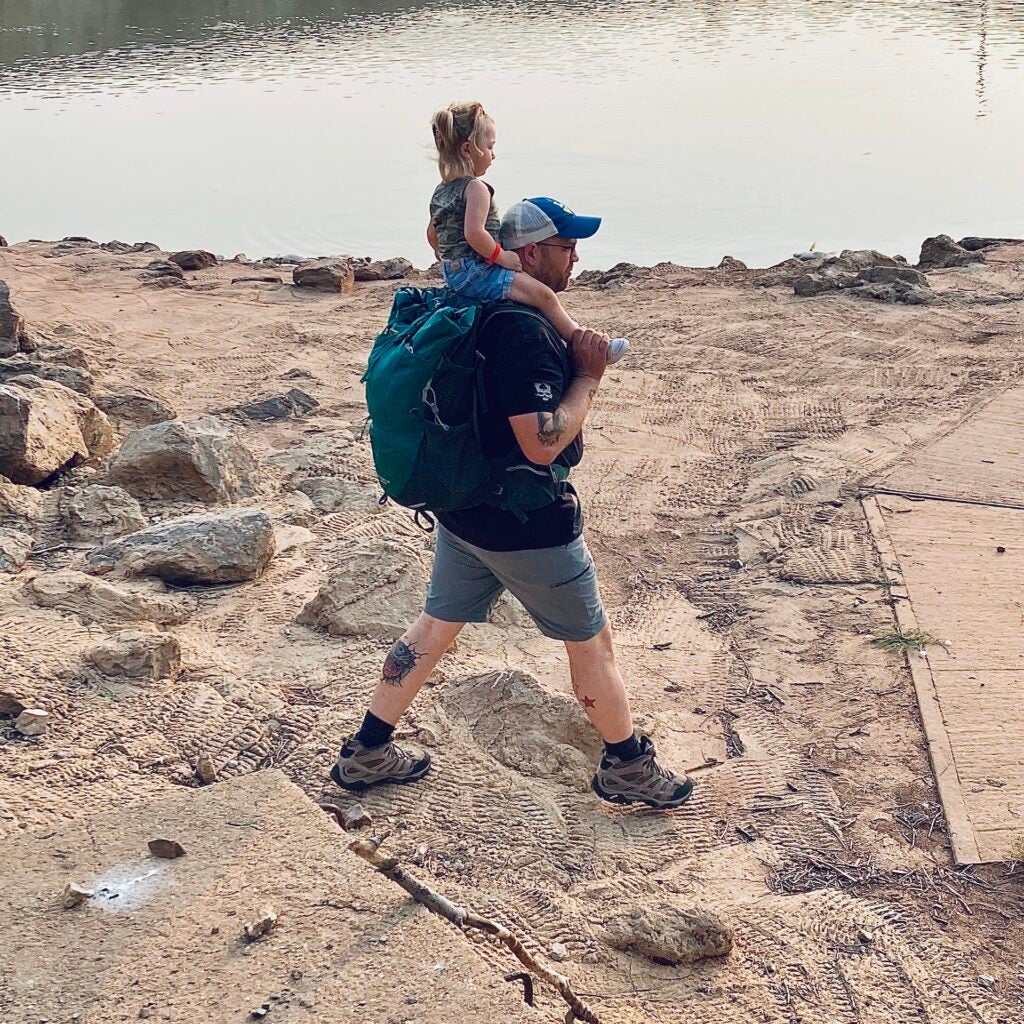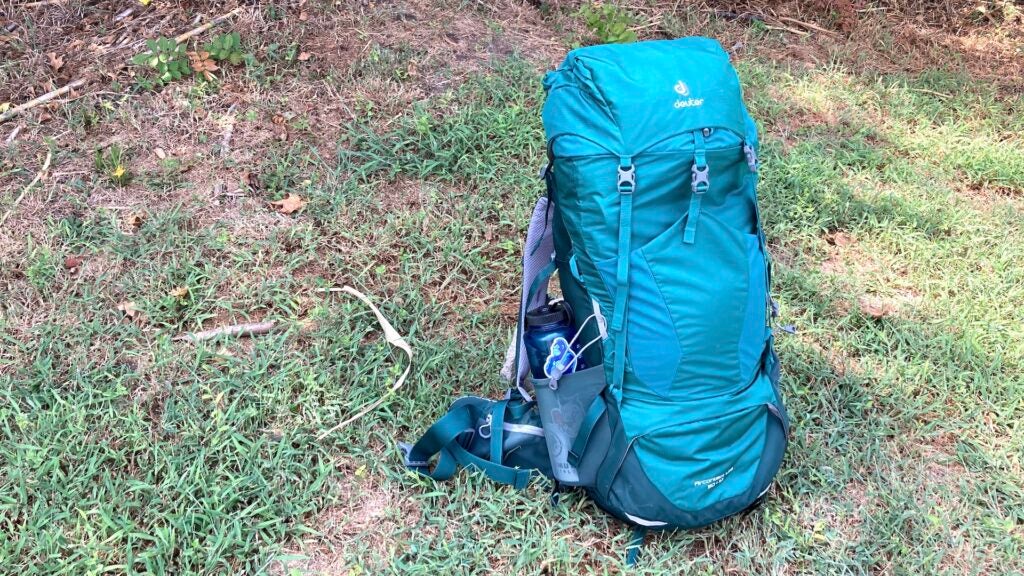When I joined the Marine Corps, I realized that everything I knew about backpacks was wrong. Before the Corps, I thought backpacks were just for books, magazines, and pencils (thank you, Jansport); now packs were for everything and anything you could stuff into them — and if you’ve ever spent a stint in the military, then you know what it’s like to pack up every possession you have into a bag and strap it to your back. Indeed, every field exercise made me feel like a hermit crab as I packed underwear, rain gear, food, water, tools, and so on. While each exercise and mission had a predetermined list of needed gear, inevitably we always ran out of room and had to pick and choose what we left behind. You could watch all the TikToks and YouTube videos on how to pack a bag efficiently, but you’ll always be limited by the size of the pack.
One of the downsides I discovered to packing so much is that the bulk really weighed on my back, and all that gear pressing up against my skin would cause me to sweat so far that my uniforms would be drenched at the end of every march. Even when I wore moisture-absorbing material, my clothing would end up getting soaked and looking like I went for a swim. Not everyone has this problem, but it’s a real challenge for those of us with extra insulation. So when my local outfitter told me about the Deuter AirContact Lite series, I was interested.
Founded by Hans Deuter in 1898, the company started out making mailbags for the Bavarian Royal Mail. As the century turned, it expanded into making tents, backpacks, and more. It continued to refine and develop its products, eventually sponsoring an expedition to the Pamir mountains in Tajikistan in 1928. During World War II, its factories were taken over for the war effort, much like what happened here in the United States; after the war, it resumed production and continued to sponsor expeditions to far-off and hard-to-reach corners of the world. Today, it offers packs for activities like hiking, cycling, climbing, skiing, and more. Rich in history, Deuter has established a philosophical focus on mountain sports, commitment, pioneering, and responsibility. Its free lifetime repair policy shows its commitment and responsibility to the customer.
Buying from my local outfitter, I paid $200 off the shelf for the Deuter AirContact Lite 50+10 backpack, which is a mid-range price for a pack that size. While there are cheaper packs out there, most came with a third of the features and half the quality. Many of the name brand competitors I looked at priced in around $250 for comparable features and quality. Let’s see how this pack held up to years of abuse, shall we?
Unboxing
This pack came right off the outfitter’s rack. That was really a blessing, as I got to open it up and explore its amazing features, like the sleeve on the inside of the pack that accommodates most hydration bladders or the emergency whistle built into the chest strap. Since it wasn’t in a box, the outfitter loaded the pack up with weighted pillows to allow me to feel the pack’s support system engaged before I bought it. I highly recommend purchasing packs this way.
Measuring in at 31.5 inches tall by 11.8 inches wide by 10.2 inches deep, this pack is incredibly spacious. What’s surprising is that all that room only weighs 3.8 pounds, or 1750 grams. My back was grateful for the small base weight. It’s remarkable at how much the company engineered this pack to do. Not including the main pouch, the ACT Lite 50+10 has seven pockets and a divider on the lower half of the main compartment. The front of the pack has a handy open-top pouch that works great for storing items you need quick access to. It has two side pockets where I stored bottles, sleeping mats, tents, and even large knives. The main compartment has a divider that can be used or stowed just above the bottom zipper. The pack’s lid is rather large, as it’s designed to detach and be used as a small day pack. When it comes to storage, this pack is well endowed.

My very first experience with this pack was on a hike up to Snow Lake in North Bend, Washington. The hike was just over 7 miles with around 1800 feet of elevation gain through an area with a high avalanche risk. During the summer, the hike is relatively easy, but winter added an extra challenge with ice and slush on the trail. To be prepared, I stuffed my Deuter with warming layers, rain/snow gear, water, and some hot beverages and snacks to make a great first test. Every pocket had something in it as I explored my new pack and how it would serve me in the adventures to come.
Since that initial trip, this pack accompanied me on numerous hikes throughout western Washington State, which included a couple of overnights and one rock climbing excursion. While I’ve loaded it down with various weights, I estimate that I averaged around 40 pounds during these trips. The shoulder pads are pretty beefy for a lightweight hiking pack, something often overlooked by other manufacturers, and as I hiked around I would adjust the straps to find the most comfortable arrangement. Surprisingly, there wasn’t much of a break in period: to really get the feel for the pack, I moved my arms and shoulders frequently to test its versatility, even grabbing items from easy-to-reach pockets. Thicker shoulder pads tend to have lengthy and uncomfortable break-in periods, but by the end of the first hike I knew this pack was ready.

This pack’s versatility, light weight, and cooling features are great additions to all the storage options. It’s seen me through camping trips, day hikes, climbing excursions, and a move across the country so far. Whether I’ve loaded it down for climbing at the crag or packed it with essentials for an overnight trip, this pack wears the same each time. Several years later, this pack’s durability has definitely become a favorite feature.
Probably one of the nicest things about this pack though is how it lets your back breathe while you wear it. During my long hikes I’d still sweat, but not nearly as bad. Instead of looking like my whole body took a plunge into the nearest river, my shirt and waistline would be the obviously sweaty spots. An added bonus is that the pack dries faster, partly from the breathable material and partly because I don’t sweat as much wearing it. After a good 15-20 minute break my pack would feel almost dry, which told me it was ready for the next leg.

The most disappointing feature is the hip pockets. Deuter designed the hip pads to sit ergonomically and while they are comfortable, they’re not great for anyone with a larger waist. The hip pockets can fit a multitool, protein bar, standard-sized cell phone, or other small trinkets, but they sit too far back to easily access while wearing the pack. I’ve got a 38-inch waist and it’s a real challenge, so far that it’s easier for me to get my cell phone from my left back pocket with my right hand than it is to access the hip pockets. The convenience factor of having pockets on your waist strap seems pointless when you can’t reach the pockets while wearing the pack.
Verdict
Overall, the Deuter Aircontact Lite 50 + 10 is a great backpack, especially as an all-arounder for utilitarians or those on a budget. It has plenty of storage to accommodate whatever adventure you’re chasing from single-day outings to multi-day trips. Deuter’s adjustable support system feels great and offers extended comfort, even when you fully load its various pockets and utilize that extra 10 liters built into it.
Saved rounds
Living and adventuring in the Pacific Northwest require a lot of waterproofing. Since this pack is made with lightweight materials, it isn’t very waterproof. While that may seem like a negative point, it’s actually a blessing. The lightweight material takes less time to dry when it does get wet. Plus, you can always use trash bags to protect your gear if you don’t want to splurge for fancy water-tight bags. If you live or adventure anywhere warm, then the lightweight and breathable material will be an even bigger advantage for you.
Q: How much does the Deuter Aircontact Lite 50+10 cost?
A: The Deuter Aircontact Lite 50+10 retails for around $200 on Amazon.
Q: How much can this pack carry?
A: This is a 50- to 60-liter pack and can carry quite a bit. It is strongly encouraged to keep any pack loads at 25 percent or less of one’s body weight to prevent injury.
Q: Does this pack come with a rain cover?
A: No, it does not, but you can find inexpensive ones easily.
Q: Can you remove the lid?
A: Yes! Deuter designed the lid to be removable, and it can actually be converted into a small day pack.
We’re here to be expert operators in everything How-To related. Use us, compliment us, tell us we’ve gone full FUBAR. Comment below and let’s talk! You can also shout at us on Twitter or Instagram.
Our gear section
Scott Whisler is a Marine Corps veteran and family man. He’s an avid student of philosophy who strives for self-growth and challenge, both found in his outdoor adventures. As a new Okie, his focus is on exploring the South Central region. His lifetime goal is to have excursions in all of the National Parks.
Task & Purpose and its partners may earn a commission if you purchase a product through one of our links. We independently evaluate gear by putting products in the hands of subject matter experts. The products we test may be purchased by Task & Purpose, our staff, or provided for review by a manufacturer. No matter the source, our testing procedures and our assessments remain free from third-party influence. Learn more about our product review process.
